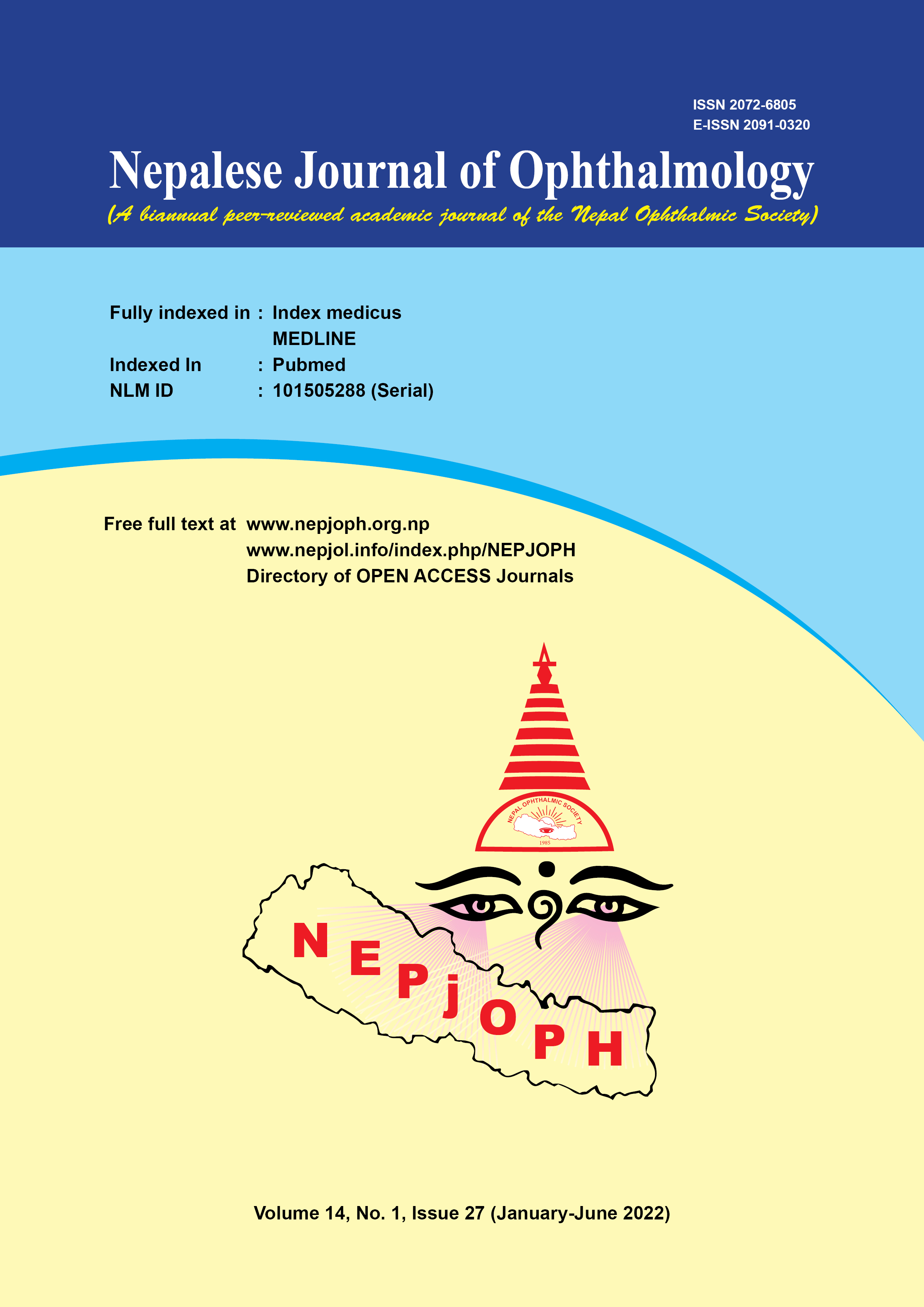Ultrasound Immersion Technique in the Management of Intra-lenticular Foreign Body in Low Resource Setting: A Case Series
DOI:
https://doi.org/10.3126/nepjoph.v14i1.34300Keywords:
Intra-lenticular foreign body, Low resource setting, Phacoemulsification, Ultrasound immersion techniqueAbstract
Introduction: The eye hospitals of low-income countries including Nepal are not equipped with imaging modalities including CT scan, UBM and Pentacam but most of them have ophthalmic ultrasound. We evaluate the utility of routine ultrasound for proper localization and confirmation of the intra-lenticular foreign body along with detection of the status of the posterior capsule using immersion technique.
Case: Four consecutive cases with intra-lenticular foreign bodies presenting to the vitreo-retina department of Lumbini Eye Institute were included in the study. Ultrasound immersion technique was used to detect the ILFB along with x-ray. Planned ILFB removal with phacoemulsification or lens aspiration and foldable IOL implantation as a single-stage procedure was done in all the patients. They were followed up to 3 months after the surgery.
Observations: Intra-lenticular location of IOFB was confirmed by ultrasound immersion technique in all 4 eyes. Intactness of the posterior capsule was also detected preoperatively in all 4 eyes. ILFBs were removed with Utrata’s capsulorrhexis forcep in all cases following capsulorrhexis. Phacoemulsification was performed to remove cataract in 2 cases whereas lens aspiration with Simcoe canula was performed in other two cases. Single piece acrylic foldable intraocular lens was implanted in all cases. Posterior capsule was intact in all 4 cases intra-operatively. Features of siderosis were observed in one case. Mild postoperative uveitis was seen in all cases and was controlled with topical steroids. Best corrected visual acuity at the last examination was 6/9 or better in all cases.
Conclusions: Ultrasound immersion technique is very useful tool in management of intra-lenticular foreign body at least in low resource setting. Phacoemulsification /lens aspiration with ILFB removal and IOL implantation provides good visual outcome in these eyes.
Downloads
Downloads
Published
How to Cite
Issue
Section
License
Copyright (c) 2022 Nepalese Journal of Ophthalmology

This work is licensed under a Creative Commons Attribution-NonCommercial-NoDerivatives 4.0 International License.
This license enables reusers to copy and distribute the material in any medium or format in unadapted form only, for noncommercial purposes only, and only so long as attribution is given to the creator.




